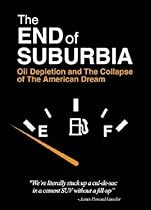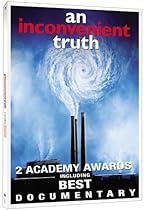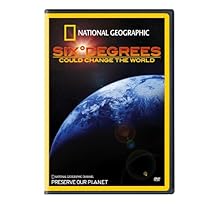 Global warming-spawned climate control was already making us reconsider where we should live. Now the cost of gasoline is also giving new meaning to "location, location, location." Even Santa Claus is moving to avoid North Pole melt.
Global warming-spawned climate control was already making us reconsider where we should live. Now the cost of gasoline is also giving new meaning to "location, location, location." Even Santa Claus is moving to avoid North Pole melt.
by Broderick Perkins
© 2008 DeadlineNews.Com
Deadline Newsroom - Gasoline is putting the brakes on the choices you thought you had about where to live.
Scientists recently revealed how burning fossil fuels, like gasoline, contributes to climatic change.
Climate change can spawn severe weather conditions that force you to think twice about where to live.
It's not just the fear of the roof being blown off, burned away or snowed under.
Extra costs are associated with living in a natural disaster risk area -- more robust buildings, higher insurance premiums, higher home energy costs and disaster preparedness, to name a few.
Now, the cost of gasoline -- averaging $4 a gallon nationwide -- is further reducing the choices you have about where to live.
A recent Coldwell Banker Associates Report, "Interest in Urban Homeownership Fueled by Higher Gas Prices", found that the vast majority of sales associates' clients -- 78 percent -- said the rising cost of gas has increased their desire to live in the city instead of the suburbs.
More than 80 percent of them said that's because, with the higher cost of gasoline, the commute is just killing their household budget. They want to be closer to work centers or the public transit that can take them there.
Urban development, inline with mitigating global warming, is typically more compact, more densely populated with both people and destinations, more walkable and generally easier to traverse for less via public transit.
Urban cores also tend to be nearer job centers and community and cultural centers. From city center it's often a lot easier to get from Point A to Point B for a fraction of the cost of a gallon of gasoline.
It the Coldwell Banker survey, 75 percent also said the basic prospect of being able to walk to more places is a positive factor. And there's a positive health factor that comes with walking.
Coldwell Banker's survey also found an 84 percent spike in interest for properties with a home office, another indication of a trend towards telecommuting, getting out of those gasoline burners and having more money to spend at home and for the home.
Global warming-sensitive planners and developers as well as consumers, more and more often seek urban living-style development -- even in the suburbs -- for a host of reasons from a healthier, walkable, more energy efficient environments to cheaper development costs, less impact on the infrastructure and closer knit communities.
Coldwell Banker's survey wasn't the first to discover gas pains in suburbia.
DeadlineNews.Com
has long reported how the reliance upon gasoline to support suburban living is a questionable approach to the American Dream.
In 2004 DeadlineNews.Com reported in "Vote For Smart Growth":
The U.S. Census Bureau's "2004 American Community Survey" found that those who were in the market to buy a home were more likely to say they want to be in or near a city as opposed to living in a suburb or rural area.
The same year the chilling documentary "The End Of Suburbia: Oil Depletion and The Collapse of The American Dream" became an eye-opener about the impact the decline in oil supplies will eventually have on the American Dream -- especially the suburban version.
The documentary reveals the lifestyle many home buyers choose is one with a questionable future.
"The whole suburban project is the greatest misallocation of resources in the history of the world. America took all its post war wealth and invested it in a living arrangement that has no future," says new urbanist James Howard Kunstler, Saratoga Springs, NY author of "Geography Of Nowhere: The Rise And Decline of America's Man-Made Landscape" (Touchstone/Simon & Schuster, $14).
"The End of Suburbia" says the nation's reliance upon fossil fuels has been exponentially multiplied by the drive-everywhere suburban way of life Kunstler calls a "tragic landscape of highway strips, parking lots, housing tracts, mega-malls, junked cities, and ravaged countryside that makes up the everyday environment where most Americans live and work. A land full of places that are not worth caring about will soon be a nation and a way of life that is not worth defending."
The now four-year-old documentary says cheap oil, enjoyed for the past 150 years as the lubricant driving suburban development, is about to evaporate and virtually forecast what's happening in today's market.
"Within our lifetimes we are going to see the end of the Age of Oil, and the result of that will be the end of an American way of life" says Richard Heinberg, author of the new "Powerdown: Options and Actions for a Post-Carbon World" (Consortium, $16.95). Heinberg is also a journalist, educator, and, at the time, core faculty member at the New College of California, a sustainable world institute in San Francisco, CA.
The documentary also said, just a year into the War in Iraq, that the war is but the first battle in a larger war to control what's left of the world's oil reserves in order to sustain a lifestyle fewer and fewer home buyers desire.
"Afghanistan and Iraq are the two opening engagements in what are bound to be a long series of wars and international contests over the remaining oil in the world, and over 60 percent of that oil is located in places where people don't like us very much," says Kunstler.
"We have to revive the idea of the city, the town. New urbanists have been criticized for being 'back to the future' but you have to pick up the threads of culture and history and carry them forward," said Peter Calthorpe , an urban designer, architect and founder of the San Francisco-based Congress for New Urbanism.
"The traditional American town and the great American city were fabulous forms of urbanism. The ultimate form, the classic American grid, both at the city scale and village scale, is pretty unique. It's just tragic the kind of environments we are creating when we compare them to what we used to build," Calthorpe said.
Indeed DeadlineNews.Com's "Builders Filling the Gap" revealed only in the last decade have new home builders become serious enough about infill housing, transit oriented development (TOD) and urban living to create special divisions devoted to the energy-dependent lifestyle.
They may be too late.
• See the series "Global Warming Hits Home" only available on DeadlineNews.Com.
© 2008 DeadlineNews.Com
Get news that really hits home for your Web site or blog from DeadlineNews.Com.
Broderick Perkins, an award-winning consumer journalist of 30 years, is publisher and executive editor of San Jose, CA-based DeadlineNews Group -- DeadlineNews.Com, a real estate news and consulting service and Web site and the new Deadline Newsroom, DeadlineNews.Com's news back shop. In both cases, it's where all the news really hits home.
DeadlineNews.Com's Editorial Content Is Intellectual Property • Unauthorized Use Is A Federal Crime
Monday, June 30, 2008
Gas Prices Fuel Urban Desires
From The
Deadline Newsroom
on
6/30/2008 09:00:00 AM
![]()
Labels: Broderick Perkins, climate change, Deadline Newsroom, DeadlineNews.Com, global warming, green building, greenhouse gases
Subscribe to:
Post Comments (Atom)


No comments:
Post a Comment